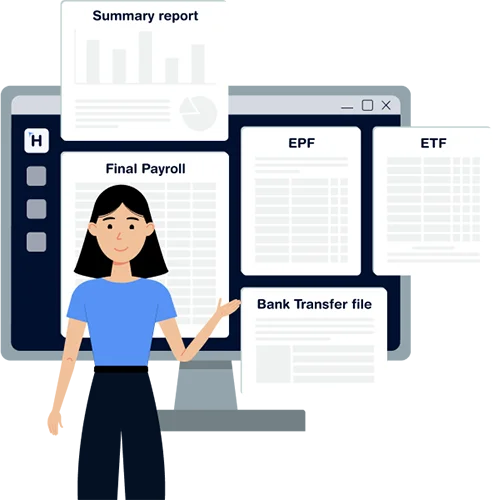At the height of the new APIT amendments both employers and employees rushed to look for ways to ease the tax burden. As most accounting professionals point out, it is understandable that employers are trying their best to look for creative ways of easing the tax burden of employees while operating within the legal parameters. This was a race against time. Almost immediately, Sri Lankan labor force experienced a wave of mass skilled migration and employees started looking for better pay, prospects, working environments and living standards. Although these conditions have stabilized a lot since the initial rush, a sizable amount of the workforce still migrates in pursuit of better prospects every month. It says a lot when, such foreign markets have started directly marketing for Sri Lankan talent disgruntled with the employment conditions in Sri Lanka.
What is Tax on tax?
Tax on tax is one of the most talked about solutions to this issue. It is one of the 7 tax tables under the Advance Personal Income Tax system, and it was seldom used and popularized prior to these tax changes. According to the “Tax on tax” laws if the employer settles the income tax liability of an employee without deducting from his salary or reimburses income tax that was already deducted from the employee, there will be an additional tax imposed on the income tax amount. This additional tax amount is known as tax on tax.
This allows the employer to ease the tax burden of the employee by paying off his income tax dues without deducting from his salary and the government can collect taxes on the extra amount the employer spends on behalf of their employee. (When you settle income tax liability without deducting from the salary, it essentially means you have paid that amount extra apart from what was considered as the taxable income initially, so tax on tax will tax the employer for that extra amount)
New Amendment in Tax-on-Tax policy
Over the years of practical implementation, payroll practitioners have discovered ways of using tax on tax laws to the benefit of both employers and employees while staying compliant with the law. Some companies offer generous business expense reimbursements which are not taxable, with the aim of supplementing their regular earnings. Some employers arrive at mutual agreements with their employees, this includes methods like the employer settling a portion of the income tax amount and apply tax on tax to that portion or the employer settling the income tax and the employee paying off the tax-on-tax amount. All of these methods are up for debate and the majority of the accounting professionals have conflicting opinions on which of these methods is the best-case practice.
However, none of that will matter anymore, a new amendment was introduced in the first part of this year (2023) rendering these mutually beneficial arrangements in tax on tax useless. And it really came without any warning because typically a circular would announce any such changes.
There are some major changes in the way tax-on-tax is implemented starting from the financial year 2023/2024. Contrary to how tax on tax was calculated according to the amount of income tax the employee is liable to pay, the new tax table used the monthly remuneration itself as the basis for calculating tax on tax.
What exactly are the amendments?
The tax table 6 which describes the tax on tax calculations reads in such a way that, if the employer decides to settle the income tax liability of an employee, his income liability on regular monthly earnings will be calculated using the instructions given in table 6.1, by passing the tax table 1 which was used for this purpose prior to the change. This will allow the accountant to calculate tax on tax applied income tax liability in a single step, which will then be paid off by the employer in one go.
This implies that most of the methods that were applied, or the loopholes companies had found a few months ago might not be applicable anymore and if the employer decides to relieve the income tax burden of his employees, he’ll have to settle the full amount taxed at a higher rate. (Higher rate replaces and achieves the purpose of applying normal tax rates that would have applied for an individual and the tax-on-tax rate which compensates for not deducting the income tax liability from the employee)
Let’s look at a few calculations using the previous method and the current one now.
Tax on tax calculation using old method
Refer to this guideline document for more details on the old method.
There are 3 key differences in this old method compared to the new one you should look out for in the example below.
- You would typically calculate the tax liability of an employee under the different tax tables wherever applicable and get the final tax amount which would then be considered under the tax table 6 to get the tax-on-tax amount that should be applied if an employer is paying off this final tax liability of an employee. So, there will be two calculations done.
- There weren’t any hard and fast rules against the mutually beneficial arrangements that companies had devised so far in this old method. So, the methods explained in the first paragraph above under the title “New Amendment in Tax-on-Tax policy” were still compliant
- You will have to calculate the tax-on-tax amount separately for regular income, lump sum amounts and secondary employment. Your final tax on tax amount is an aggregated value from all of tax values derived from all of these instances.
Example:
Kushantha is a resident employee working in a private institution. His monthly gross remuneration for the month of January 2023 was 300,000/-. His employer has undertaken to pay his tax without deducting from his remuneration.
Computation of tax payable by the employer is as follows :-
[wpdatatable id=8]
Example of a mutual arrangement:
There are cases where the employees have an arrangement with their employer that the employer will pay off the tax payable on the taxable income and the employee will pay the tax-on-tax amount. So, in the above example,
Employer would pay Rs 35,000
Employer will bear Rs 15,001
It is also worth noting that the employer bears Rs 15,001 extra in taxes since he has undertaken to pay his tax without deducting from the employee’s remuneration.
Tax on tax calculation using new method
Refer to this guideline document for more details on the new method.
There are two key differences in this new method compared to the old one you should look out for in the example below.
- Here you would bypass the typical tax tables that apply for employee remuneration and calculate the tax-on-tax amounts in one go.
- Amended guidelines dictates that if an employer has undertaken to pay his tax without deducting from his remuneration, then he must settle one final figure after tax-on-tax rates are applied
- Here too you will calculate the final tax amount after tax on tax under 3 different scenarios, regular income, lump sum amounts and secondary employment. However, at the end this calculation you will get a single value as your tax amount
Example:
Kushantha is a resident employee working in a private institution. His monthly gross remuneration for the month of May 2023 was 300,000/-. His employer has undertaken to pay his tax without deducting from his remuneration.
Computation of tax payable by the employer is as follows :-
[wpdatatable id=9]
Here the employer will bear the full Rs 53,906 in taxes after tax on tax is applied.
Also note that compared to the final tax amount prior to the amendment the final tax amount now has also increased by Rs 3,906.
Conclusion
By comparing the old tax on tax policy against the new it can be observed that similar to all other tax tables and taxable scenarios like monthly regular earnings, lump sum or non-cash benefits tax on tax has also increased the amount of taxes the government retains and has also eliminated any loopholes or vaguely written areas where employers and employees could exploit for their mutual advantage. It appears that the government has tightened the laws in such a way it discourages employers from paying off their employees’ tax burden.



